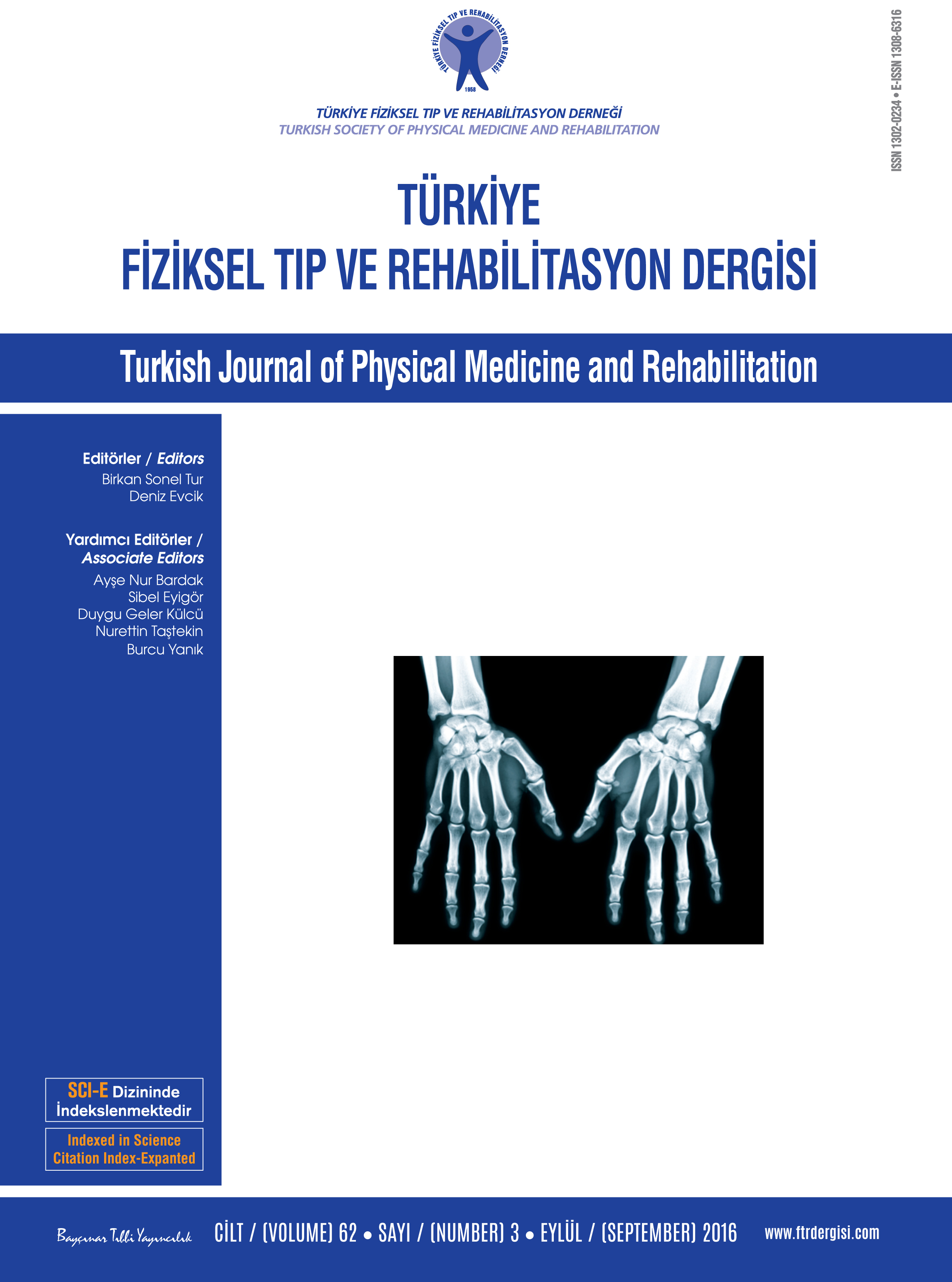The impact of additional trunk balance exercises on balance, functional condition and ambulation in early stroke patients: Randomized controlled trial
2 Department of Physical Medicine and Rehabilitation, Medical Faculty of Pamukkale University, Denizli, Turkey
3 Department of Physical Medicine and Rehabilitation, Yavuz Selim Bone Diseases Hospital, Trabzon, Turkey
4 Department of Physical Medicine and Rehabilitation, Şişli Hamidiye Etfal Training and Research Hospital, İstanbul, Turkey DOI : 10.5606/tftrd.2016.84770 Objectives: This study aims to investigate the effect of additional trunk exercises to conventional exercise program on balance, functional condition and ambulation in early stage stroke patients.
Patients and methods: A total of 65 patients were included in this double-blinded randomized controlled study. Patients were assigned to two groups as experimental group (n=32) who performed trunk exercises two hours/day/three weeks accompanied by conventional exercise program, and control group (n=32) who received only conventional exercise program during the three weeks. Balance, trunk balance, functional level and ambulation were assessed by Berg Balance Scale, Trunk Impairment Scale, Functional Independence Measurement, Rivermead Mobility Index, respectively. Patients were evaluated pretreatment and on the third month after the treatment.
Results: There was no statistically significant difference between the outcome measurements between the groups at the pretreatment evaluation. All outcome measurements were improved significantly between pre- and post-treatment evaluation in general linear repeated measures model. The interaction parameter of “time x condition” according to time and recovery was significantly better in experimental group than in control group. The highest mean difference in efficacy between the two rehabilitation interventions was found for dynamic sitting balance in post hoc calculations.
Conclusion: According to the results of our study, in early stroke patients either conventional exercises or conventional exercises plus trunk balance exercises can provide significant improvement in balance, functional condition and ambulation. However, the level of the improvement is better for the group which was applied trunk balance exercises to conventional exercises. Trunk balance exercises that are easily applicable with simple mechanisms by the patients themselves can be added to the rehabilitation.
Keywords : Exercise; rehabilitation; stroke; trunk balance

















